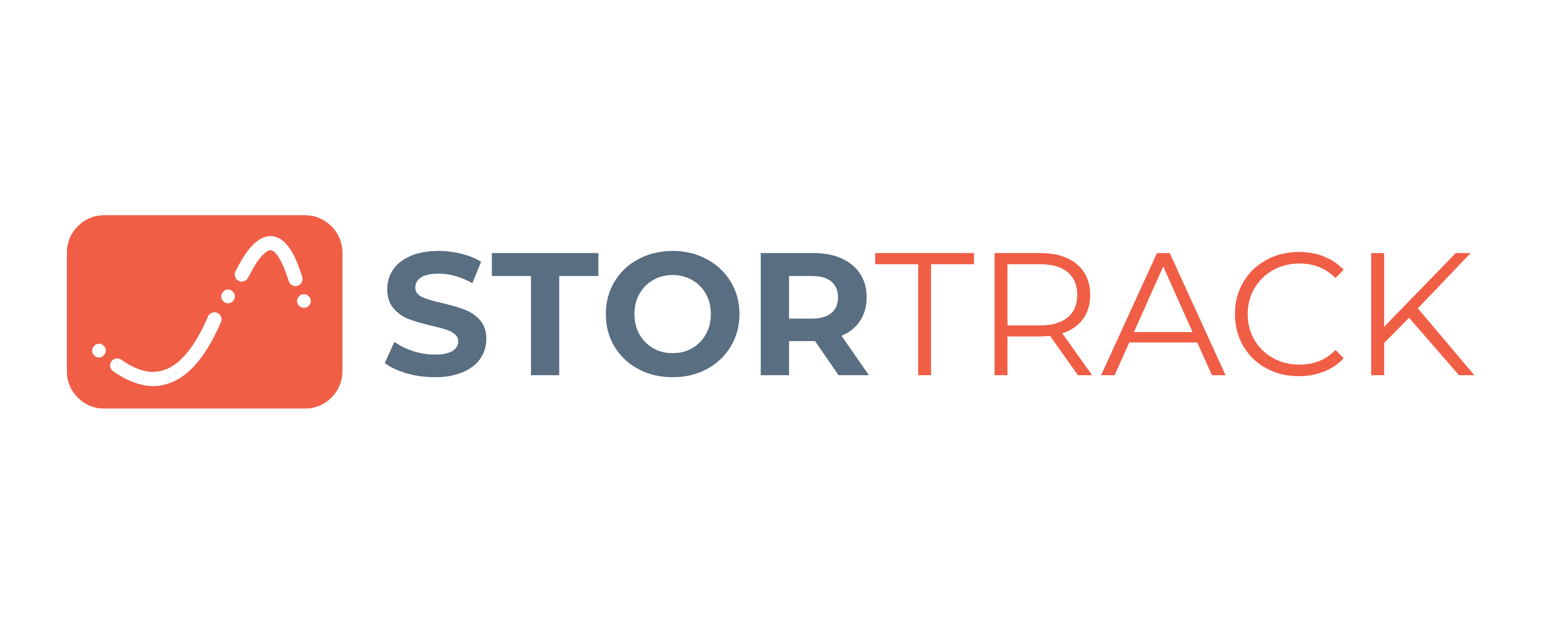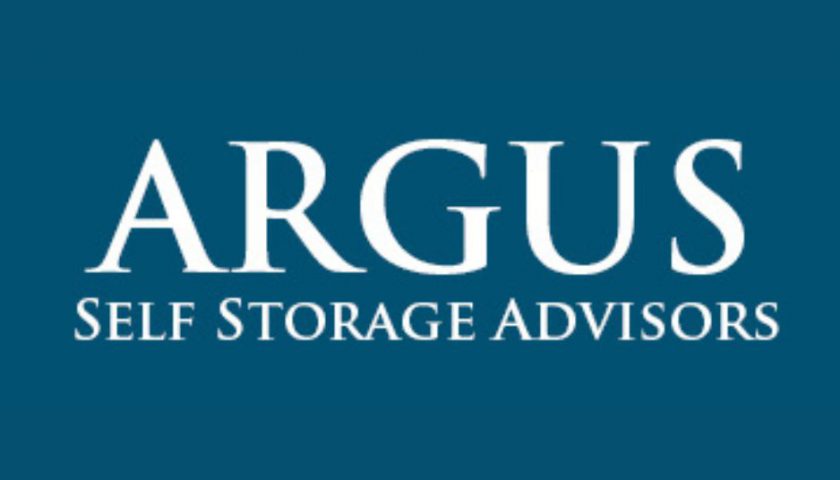

Self-storage pricing is undergoing a transformation as operators navigate shifting economic conditions, consumer behavior, and competitive pressures. While the industry has long been considered recession-resistant, the latest data reveals a more nuanced landscape – one where supply expansion, evolving pricing models, and strategic revenue management are shaping the road ahead. With more than 66,000 facilities covering 2.6 billion net rentable square feet (NRSF) and an additional 4,000 projects in the pipeline, the sector is adapting to new challenges that could redefine pricing strategies in the coming years.
Rental rates have shown a slight dip over the past month, but the year-over-year (YoY) trend paints a more pronounced picture. Street rates have declined 2.5% to $1.38/sf, while online rates have fallen 5.4% to $1.14/sf, signaling an increasingly aggressive digital pricing approach. At their peak in Q3 2024, online discounts reached 20% before settling at an average 17% discount – a higher level than the previous year and part of a steady upward trajectory over the past three years . These trends highlight the growing importance of digital-first pricing strategies, as operators adjust incentives to attract tenants in a price-sensitive environment.
A major focus in the industry today is Existing Customer Rate Increases (ECRIs) as operators look to offset lower move-in rates and deep lease-up discounts. With interest rates somewhat stabilizing and housing trends shifting, long-term pricing optimization has become a priority. Leading REITs and operators are strategically balancing competitive introductory pricing with structured ECRIs, allowing them to sustain NOI growth even in competitive markets.
Self-storage remains one of the strongest-performing real estate asset classes, ranking just behind data centers in investment appeal. Despite challenges such as market saturation, rising development costs, and regulatory pressures—including higher property taxes and stricter zoning laws—long-term demand remains robust. Key drivers include an aging population downsizing, evolving homeownership trends fueling decluttering, and increasing institutional investment, which continue to support the sector’s growth. While short-term pricing pressures persist, stable occupancy rates reflect self-storage’s adaptability, reinforcing its position as a resilient and attractive investment.
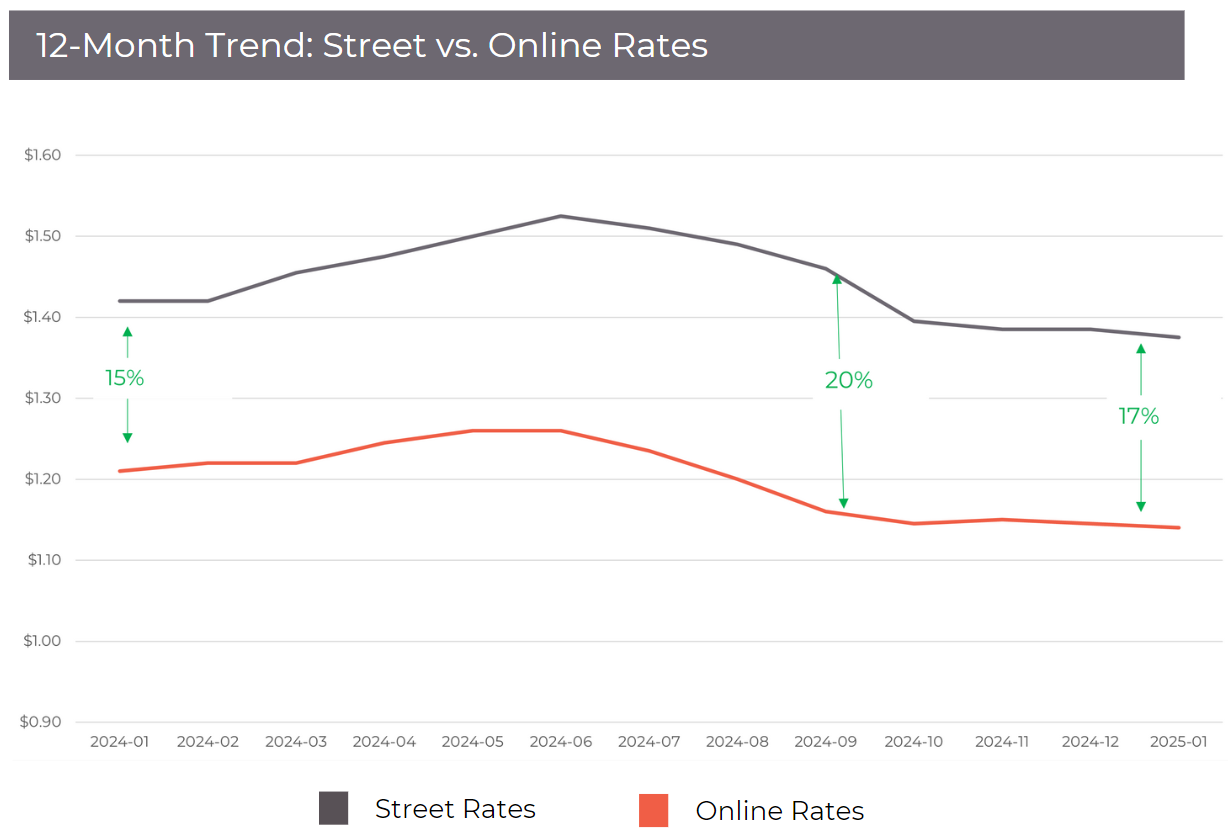

Pricing by Unit Type & Size
Climate-controlled (CC) units saw a 1.3% decline in pricing over the past month, likely due to reduced seasonal demand during colder months, while non-climate-controlled (NCC) units remained stable at $1.23/sf. Over the past year, both CC and NCC unit rates declined by 2.4%, mirroring the broader downward trend in street rates.
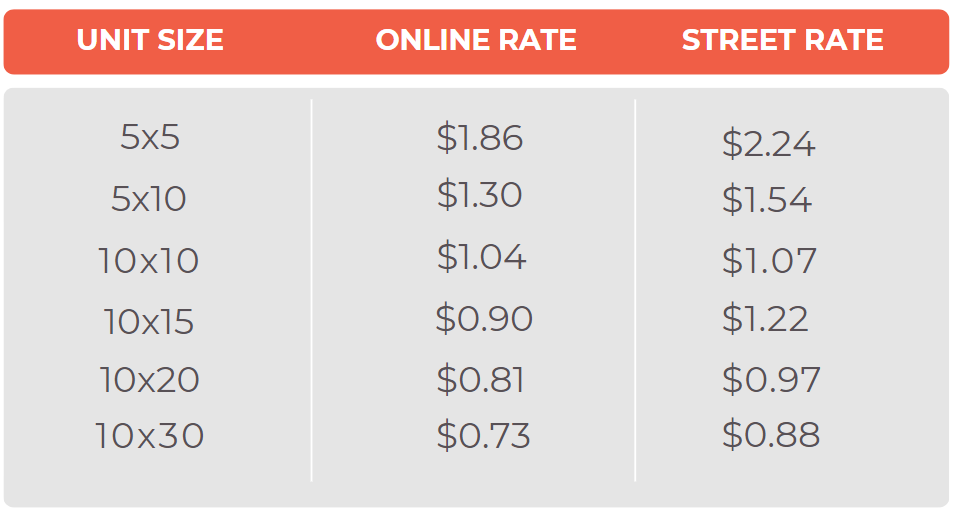
Smaller units continue to command a premium, with 5×5 units leading at $2.24/sf, while 10×30 units remain the most economical at $0.88/sf. The steepest price discounts occur when tenants upgrade to a larger unit size, particularly when moving from a 5×5 to a 5×10, indicating a pricing strategy designed to encourage tenants to lease larger spaces. This trend highlights the industry’s focus on balancing revenue optimization with providing value-driven incentives for customers seeking more storage capacity.
By Top 20 MSAs
The top 20 MSAs account for 38% of the nation’s total NRSF, with Dallas and Houston leading the market, each surpassing 90 million square feet. Pricing trends across these key markets vary significantly, shaped by supply growth, demand drivers, and competitive pressures. While some MSAs remain undersupplied, supporting stable or rising rates, others face pricing declines due to increased competition and ongoing new development. Nationally, street rates have fallen 0.7% month-over-month (MoM) and 2.5% year-over-year (YoY), reflecting the broader impact of supply-demand imbalances.
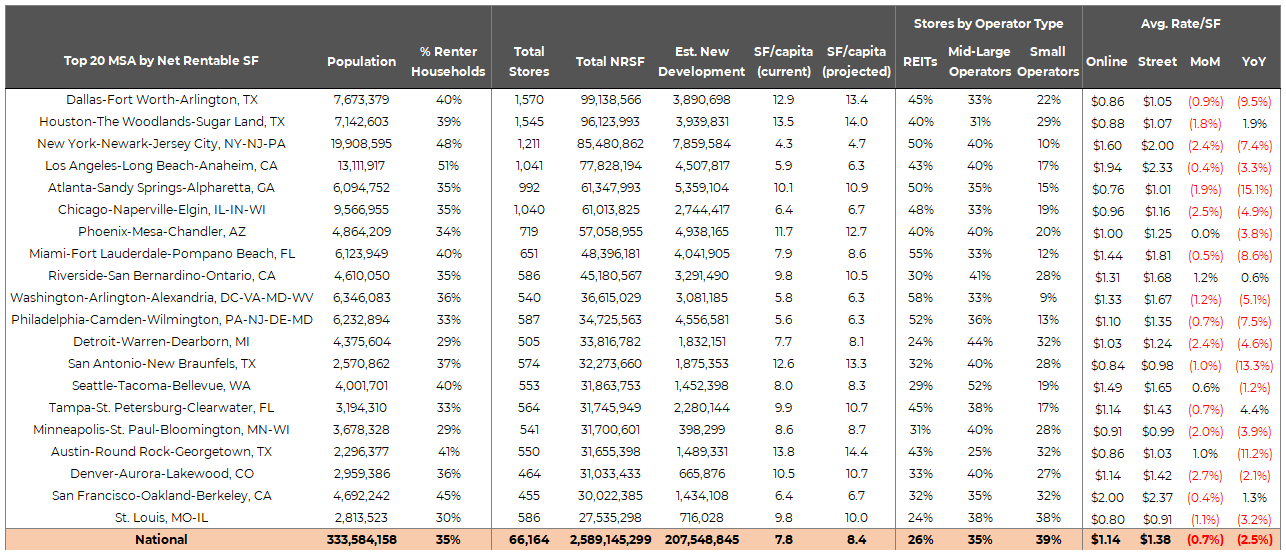
![]()
Rate Declines in High-Supply Markets
MSAs with elevated square footage per capita and high levels of new development are experiencing the sharpest rate declines. Dallas (-9.5% YoY), San Antonio (-13.3% YoY), and Atlanta (-15.1% YoY) have seen significant downward pressure as new supply enters the market, increasing competition and lease-up challenges.
Markets Showing Resilience
Despite the broader industry slowdown, some MSAs have maintained rate stability or even posted growth. Tampa (4.4% YoY) and San Francisco (1.3% YoY) are among the few markets where pricing has held firm, reflecting strong local demand and more balanced supply levels.
REIT-Dominated Markets with Aggressive Pricing Strategies
MSAs with a high concentration of REIT-operated facilities (50%+ market share) tend to employ more aggressive online pricing strategies. In Philadelphia, REIT-controlled properties discount online rates by an average of 19%, while Atlanta operators have implemented an average 25% online discounting strategy. These same MSAs are also expected to see some of the highest supply growth in 2025, with new supply increasing between 8% (Washington-Arlington, Miami) to over 13% (Atlanta) – putting further pressure on pricing.
![]()
Renter-Dense Markets Supporting Stronger Demand
Markets with high renter populations tend to sustain stronger self-storage demand. In Los Angeles (51% renters) and New York (48% renters), despite lower square footage per capita, street rates remain above $2.00/sf. While Los Angeles saw rate declines in line with the national average, New York experienced a steeper 7.4% YoY drop, likely due to economic and market-specific factors. Meanwhile, San Francisco recorded a 1.3% YoY increase, underscoring its strong demand foundation. Despite pricing pressures, all three markets continue to see new supply, reinforcing demand driven by dense renter populations.
Over-Supplied Markets Facing Competitive Challenges
The four MSAs with the highest square foot per capita (12+ sf/person) are all in Texas. While Houston posted a modest 2% YoY rate increase, other major Texas markets-Dallas, San Antonio, and Austin-saw some of the steepest rate declines over the past year. With new supply expected to increase by an additional 4% in these metros, further pricing compression is likely as properties compete to stabilize lease-up rates.
Undersupplied Markets Presenting Growth Opportunities
MSAs along the East Coast, including New York, Philadelphia, and Washington-Arlington, remain attractive for future development. Despite ongoing construction activity, these markets still fall below the national average of 7.8sf/capita, signaling further room for growth.
According to U-Haul’s Growth Index, South Carolina was the #1 growth state in 2024, surpassing Texas after three years at the top. Inbound moves (51.7%) were driven by affordable living, job growth in manufacturing, tech, and healthcare, and a favorable climate. Texas, North Carolina, Florida, and Tennessee follow, while California leads in net out-migration for the fifth consecutive year. Migration remains a key driver of self-storage demand, with relocations fueling both short- and long-term storage needs. As the Southeast and Southwest attract more movers, out-migration from California, the Northeast, and Midwest may intensify pricing pressure in oversupplied markets. Operators tracking these shifts can refine pricing, optimize occupancy, and identify growth opportunities in high-demand regions.

Self-storage pricing remains highly market-specific, with high-supply MSAs facing continued pricing pressure, while renter-dense and undersupplied markets maintain stronger rate stability. As new development enters key metros, operators must focus on occupancy strategies, competitive pricing models, and customer retention to sustain revenue growth. Monitoring supply absorption rates and adjusting rate strategies accordingly will be critical for maintaining profitability in a shifting landscape.
Despite near-term challenges, self-storage remains well-positioned for long-term growth, supported by its adaptability and revenue optimization strategies. Several key trends will shape the industry’s trajectory:
 • Interest Rate Shifts & Housing Market Recovery. As borrowing costs decline, commercial real estate transactions are expected to increase, potentially boosting home sales and relocations, both of which are positive demand drivers for self-storage.
• Interest Rate Shifts & Housing Market Recovery. As borrowing costs decline, commercial real estate transactions are expected to increase, potentially boosting home sales and relocations, both of which are positive demand drivers for self-storage.
• Institutional Investment & Market Consolidation. More institutional capital is flowing into the sector, driving consolidation, operational efficiencies, and enhanced pricing strategies that improve long-term stability.
• Alternative Demand Drivers. Expansion beyond traditional residential storage into RV/boat storage, small business storage, and e-commerce fulfillment presents new growth opportunities in an evolving market.
While challenges persist, self-storage continues to demonstrate resilience, with operators who leverage data-driven pricing, optimize operational efficiencies, and identify high-growth markets best positioned for sustained success in 2025 and beyond.


